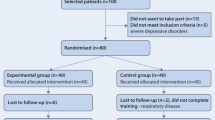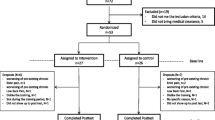Abstract
In a well-executed golf swing, golfers must maintain good balance and precise control of posture. Golfing also requires prolonged walking over uneven ground such as a hilly course. Therefore, repeated golf practice may enhance balance control and confidence in the golfers. The objective is to investigate whether older golfers had better balance control and confidence than non-golfing older, healthy adults. This is a cross-sectional study, conducted at a University-based rehabilitation center. Eleven golfers and 12 control subjects (all male; mean age: 66.2 ± 6.8 and 71.3 ± 6.6 years, respectively) were recruited. Two balance control tests were administered: (1) functional reach test which measured subjects’ maximum forward distance in standing; (2) sensory organization test (SOT) which examined subjects’ abilities to use somatosensory, visual, and vestibular inputs to control body sway during stance. The modified Activities-specific Balance Confidence (ABC) determined subject’s balance confidence in daily activities. The golfers were found to achieve significantly longer distance in the functional reach test than controls. They manifested significantly better balance than controls in the visual ratio and vestibular ratio, but not the somatosensory ratio of the SOT. The golfers also reported significantly higher balance confidence score ratios. Furthermore, older adults’ modified ABC score ratios showed positive correlations with functional reach, visual and vestibular ratios, but not with somatosensory ratio. Golfing is an activity which may enhance both the physical and psychological aspects of balance control. Significant correlations between these measures reveal the importance of the balance control under reduced or conflicting sensory conditions in older adults’ balance confidence in their daily activities. Since cause-and-effect could not be established in the present cross-sectional study, further prospective intervention design is warranted.


Similar content being viewed by others
References
Agrawal Y, Carey JP, Della Santina CC, Schubert MC, Minor LB (2009) Disorders of balance and vestibular function in US Adults: data from the National Health and Nutrition Examination Survey, 2001–2004. Arch Intern Med 169(10):938–944
Aslan UB, Cavlak U, Yagci N, Akdag B (2008) Balance performance, aging and falling: a comparative study based on a Turkish sample. Arch Gerontol Geriatr 46(3):283–292
Berg KO, Kairy D (2002) Balance interventions to prevent falls. Generations (San Francisco, Calif.) 26:75–78
Buatois S, Gueguen R, Gauchard GC, Benetos A, Perrin PP (2006) Posturography and risk of recurrent falls in healthy non-institutionalized persons aged over 65. Gerontology 52(6):345–352
Campbell AJ, Spears GF, Borrie MJ (1990) Examination by logistic-regression modeling of the variables which increase the relative risk of elderly women falling compared to elderly men. J Clin Epidemiol 43(12):1415–1420
Carpenter MG, Adkin AL, Brawley LR, Frank JS (2006) Postural, physiological and psychological reactions to challenging balance: Does age make a difference? Age Ageing 35(3):298–303
Carter ND, Kannus P, Khan KM (2001) Exercise in the prevention of falls in older people—a systematic literature review examining the rationale and the evidence. Sports Med 31(6):427–438
Chiu HFK, Lee HC, Chung WS, Kwong PK (1994) Reliability and validity of the cantonese version of mini-mental status examination: a preliminary study. Hong Kong J Psychiatry 4(2):25–28
Chu LW, Chi I, Chiu AY (2005) Incidence and predictors of falls in the Chinese elderly. Ann Acad Med Singap 34(1):60–72
Dennis RJ (1999) Functional reach improvement in normal older women after Alexander Technique instruction. J Gerontol Ser A Biol Sci Med Sci 54(1):M8–M11
Dietz V, Schubert M, Discher M, Trippel M (1994) Influence of visuoproprioceptive mismatch on postural adjustments. Gait Posture 2:147–155
Dietz V, Trippel M, Horstmann GA (1991) Significance of proprioceptive and vestibulospinal reflexes in the control of stance and gait. In: Patla AE (ed) Adaptability of human gait. Elsevier, Amsterdam, pp 37–52
Draovitch P, Westcott W (1999) Complete conditioning for golf. Human Kinetics, Champaign
Duncan PW, Weiner DK, Chandler J, Studenski S (1990) Functional reach—a new clinical measure of balance. J Gerontol 45(6):M192–M197
Hegeman J, van den Bemt BJF, Duysens J, van Limbeek J (2009) NSAIDs and the risk of accidental falls in the elderly: a systematic review. Drug Saf 32(6):489–498
Huang HC, Gau ML, Lin WC, Kernohan G (2003) Assessing risk of falling in older adults. Public Health Nurs 20(5):399–411
Ko YM, Park WB, Lim JY, Kim KW, Paik NJ (2009) Discrepancies between balance confidence and physical performance among community-dwelling Korean elders: a population-based study. Int Psychogeriatr 21(4):738–747
Lajoie Y, Gallagher SP (2004) Predicting falls within the elderly community: comparison of postural sway, reaction time, the Berg balance scale and the Activities-specific Balance Confidence (ABC) scale for comparing fallers and non-fallers. Arch Gerontol Geriatr 38(1):11–26
Lee DN, Lishman R (1975) Visual proprioceptive control of stance. J Hum Mov Stud 1:87–95
Leong HT, Fu SN, Ng GYF, Tsang WWN (2011). Low level Taekwondo practitioners have better somatosensory organisation in standing balance than normal sedentary people. Eur J Appl Physiol. doi:10.1007/s00421-00010-01798-00427
Nashner LM (1994) Evaluation of postural stability, movement and control. In: Hasson SM (ed) Clinical exercise physiology. Mosby, St. Louis, pp 199–234
Okuda I, Armstrong CW, Tsunezumi H, Yoshiike H (2002) Biomechanical analysis of professional golfer’s swing: Hidemichi Tanaka. In: Thain E (ed) Science and golf IV. Routledge, London, pp 18–27
Powell LE, Myers AM (1995) The Activities-specific Balance Confidence (ABC) Scale. J Gerontol Ser A Biol Sci Med Sci 50(1):M28–M34
Rubenstein LZ, Josephson KR (2002) The epidemiology of falls and syncope. Clin Geriatr Med 18(2):141–158
Sell TC, Tsai YS, Smoliga JM, Myers JB, Lephart SM (2007) Strength, flexibility, and balance characteristics of highly proficient golfers. J Strength Cond Res 21(4):1166–1171
Shumway-Cook A, Ciol MA, Gruber W, Robinson C (2005) Incidence of and risk factors for falls following hip fracture in community-dwelling older adults. Phys Ther 85(7):648–655
Steinman BA, Pynoos J, Nguyen AQD (2009) Fall risk in older adults roles of self-rated vision, home modifications, and limb function. J Aging Health 21(5):655–676
Sundermier L, Woollacott MH, Jensen JL, Moore S (1996) Postural sensitivity to visual flow in aging adults with and without balance problems. J Gerontol Ser A Biol Sci Med Sci 51(2):M45–M52
Tinetti ME, Gordon C, Sogolow E, Lapin P, Bradley EH (2006) Fall-risk evaluation and management: challenges in adopting geriatric care practices. Gerontologist 46(6):717–725
Tsang WWN, Hui-Chan CW (2010) Static and dynamic balance control in older golfers. J Aging Phys 18:1–13
Tsang WWN, Hui-Chan CWY (2003) Effects of Tai Chi on joint proprioception and stability limits in elderly subjects. Med Sci Sports Exerc 35(12):1962–1971
Tsang WWN, Hui-Chan CWY (2004) Effects of exercise on joint sense and balance in elderly men: Tai Chi versus golf. Med Sci Sports Exerc 36(4):658–667
Tsang WWN, Hui-Chan CWY (2005) Comparison of muscle torque, balance, and confidence in older Tai Chi and healthy adults. Med Sci Sports Exerc 37(2):280–289
Tsang WWN, Wong VS, Fu SN, Hui-Chan CW (2004) Tai Chi improves standing balance control under reduced or conflicting sensory conditions. Arch Phys Med Rehabil 85(1):129–137
Van Heuvelen MJG, Kempen G, Ormel J, Rispens P (1998) Physical fitness related to age and physical activity in older persons. Med Sci Sports Exerc 30(3):434–441
Wallmann HW (2001) Comparison of elderly nonfallers and fallers on performance measures of functional reach, sensory organization, and limits of stability. J Gerontol Ser A Biol Sci Med Sci 56(9):M580–M583
Woollacott MH, Shumway-cook A, Nashner LM (1986) Aging and posture control—changes in sensory organization and muscular coordination. Int J Aging Hum Dev 23(2):97–114
Acknowledgments
The authors thank the Hong Kong Polytechnic University for financial support of this study through an Area of Strategic Development Grant to C.W.Y. Hui-Chan, W.W.N. Tsang et al. Thanks are also owed to the subjects and to the older adult centers for permission to recruit their members. The authors also thank Mr. Bill Purves for his English editorial advice. No commercial party having a direct financial interest in the research findings reported here has conferred or will confer a benefit on the authors or on any organization with which the authors are associated.
Author information
Authors and Affiliations
Corresponding author
Additional information
Communicated by Fausto Baldissera.
Rights and permissions
About this article
Cite this article
Gao, K.L., Hui-Chan, C.W.Y. & Tsang, W.W.N. Golfers have better balance control and confidence than healthy controls. Eur J Appl Physiol 111, 2805–2812 (2011). https://doi.org/10.1007/s00421-011-1910-7
Received:
Accepted:
Published:
Issue Date:
DOI: https://doi.org/10.1007/s00421-011-1910-7




